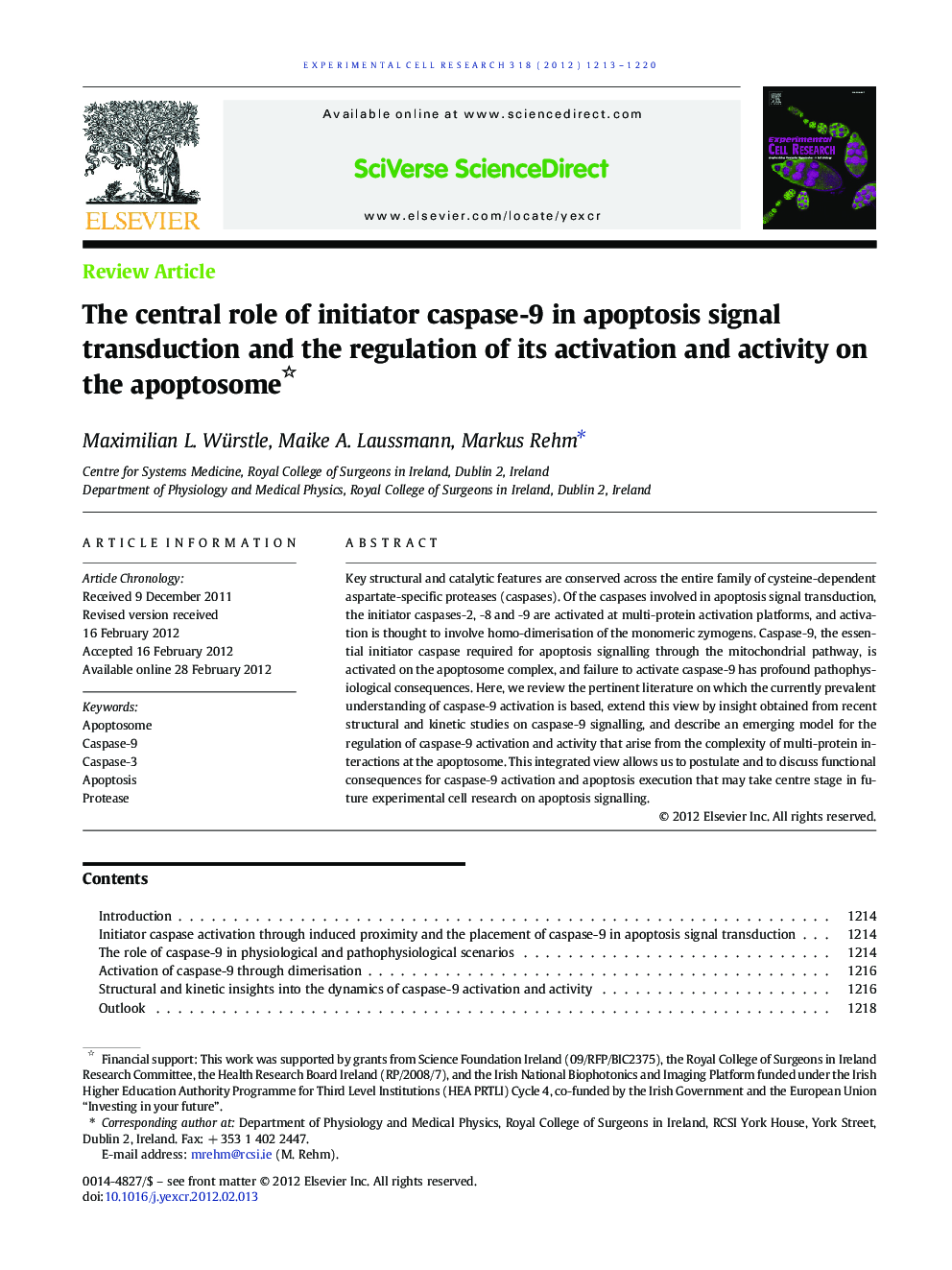| Article ID | Journal | Published Year | Pages | File Type |
|---|---|---|---|---|
| 10904398 | Experimental Cell Research | 2012 | 8 Pages |
Abstract
Key structural and catalytic features are conserved across the entire family of cysteine-dependent aspartate-specific proteases (caspases). Of the caspases involved in apoptosis signal transduction, the initiator caspases-2, -8 and -9 are activated at multi-protein activation platforms, and activation is thought to involve homo-dimerisation of the monomeric zymogens. Caspase-9, the essential initiator caspase required for apoptosis signalling through the mitochondrial pathway, is activated on the apoptosome complex, and failure to activate caspase-9 has profound pathophysiological consequences. Here, we review the pertinent literature on which the currently prevalent understanding of caspase-9 activation is based, extend this view by insight obtained from recent structural and kinetic studies on caspase-9 signalling, and describe an emerging model for the regulation of caspase-9 activation and activity that arise from the complexity of multi-protein interactions at the apoptosome. This integrated view allows us to postulate and to discuss functional consequences for caspase-9 activation and apoptosis execution that may take centre stage in future experimental cell research on apoptosis signalling.
Related Topics
Life Sciences
Biochemistry, Genetics and Molecular Biology
Cancer Research
Authors
Maximilian L. Würstle, Maike A. Laussmann, Markus Rehm,
